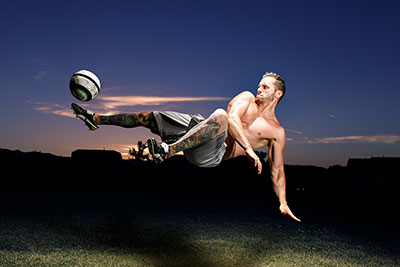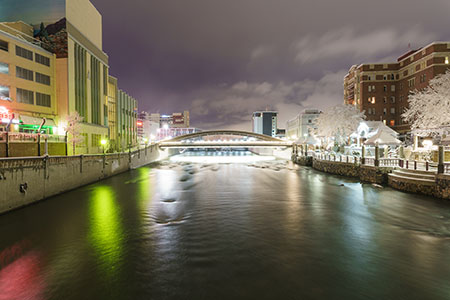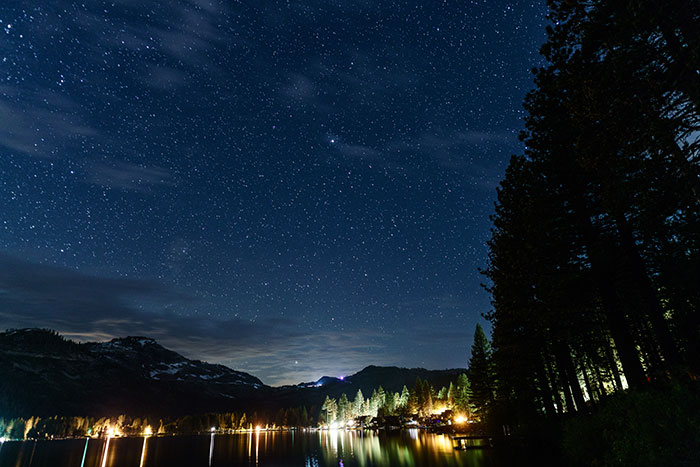Nevada Photographers: M.D. Welch
September-October 2017
Nevada Photo Tours: Learn to shoot the Silver State through the eyes of professional photographers.
SERIES COMPILED BY KIPPY S. SPILKER
The bacon wave at Valley of Fire State Park. A sunset at Lake Tahoe’s Bonsai rock. The International Car Forest of the Last Church in Goldfield. Iconic images are everywhere in Nevada, but capturing them in photos can be tricky. Taking a photo tour with a professional photographer can bring it all into focus. This year, we’ll highlight some of the photographers offering tours and workshops across Nevada. They’ll share some favorite spots, a few of their best tips, and tell some stories about shooting the Silver State. If you take a tour or workshop, let them know you heard about them in Nevada Magazine, and get ready to take some amazing photos of your own.
M.D. Welch, in his own words
I have been a professional photographer since 1999. I have always been drawn to photography, running around with a Polaroid camera at the ripe old age of 5. But it was only after a few years of working as a graphic designer that I knew a career change was required, and the field of photography was where I wanted to make my living.
Like many photographers today, I went about learning how to make photos on my own, which is maybe my biggest mistake, as many of the errors I have made over the years would have been fixed with some quality instruction. That struggle is something I bring to every class I teach, making sure students do not waste their time on little mistakes that create big problems.
Photography led me into the field of video and film work in 2005. Working in video opened my eyes to understanding how to work and shape light, and to get it right in camera, because retouching something at 24 frames per second is not anyone’s idea of a good time.
 Now I spend my workdays between making pictures and videos for my clients. While my professional work is commercial and editorial based, as a native Nevadan, it is hard not to venture out to make landscape and astrophotography shots when the time allows.
Now I spend my workdays between making pictures and videos for my clients. While my professional work is commercial and editorial based, as a native Nevadan, it is hard not to venture out to make landscape and astrophotography shots when the time allows.
Currently, I split my time teaching at several institutions. I teach online graphic design courses, including Photoshop, at the University of Nevada, camera and lighting classes at the Nevada Museum of Art, and longer format classes at Maine Media Workshops and Shooting the West.
Teaching at different locations gives me the opportunity to not only meet photographers of different skill levels, but to explore new formats of teaching based on subject and time. Some classes are a single day, while others can be a weeklong. No matter what level or length, I enjoy the challenge of teaching and draw great joy is helping other photographers break through technical barriers, learning new skills that improve their work.
 One thing I try to stress more than anything to my students is the importance of shooting on a regular basis. So many times I am asked, “How do I get better images, or improve my technique?” And while gear does help, the photographer that shoots several times a week will improve much faster than those that only shoot when it counts. If you can, make the attempt to shoot once a day, even if it is only for a few minutes, no matter what you skill level is, your work is going to improve compared to those who only break out the camera when they need to make the shot. And this applies to the experience photographer as much as the beginner. I have found myself too busy to shoot, and then fumbling around more than I should when trying to make a picture. Just like an athlete, we must practice on regular bases to not only get better at our craft, but being able to make a photograph when that moment comes.
One thing I try to stress more than anything to my students is the importance of shooting on a regular basis. So many times I am asked, “How do I get better images, or improve my technique?” And while gear does help, the photographer that shoots several times a week will improve much faster than those that only shoot when it counts. If you can, make the attempt to shoot once a day, even if it is only for a few minutes, no matter what you skill level is, your work is going to improve compared to those who only break out the camera when they need to make the shot. And this applies to the experience photographer as much as the beginner. I have found myself too busy to shoot, and then fumbling around more than I should when trying to make a picture. Just like an athlete, we must practice on regular bases to not only get better at our craft, but being able to make a photograph when that moment comes.
A photographer’s focus and skill level does not matter to me when I am teaching. I treat everyone’s photography like it was my own. The only real separator in my eyes, is if you are trying to make a living at photography, or making images for the love and passion of the work.
There is no better time to be a photographer; from the radical advances that digital photography is making, with crazy high ISO settings and mirrorless cameras, to the re-birth of film photography and alternative printing methods. But all of that “stuff” can get in the way of trying to make a quality image, and while online videos are great, there is nothing better than being in a class room, with hands on instruction, with someone that understands not only the technical aspect, but also understands the frustration that you are going through while on the journey to that next great image.
M.D. Welch
[email protected]
depth-of-field.com

